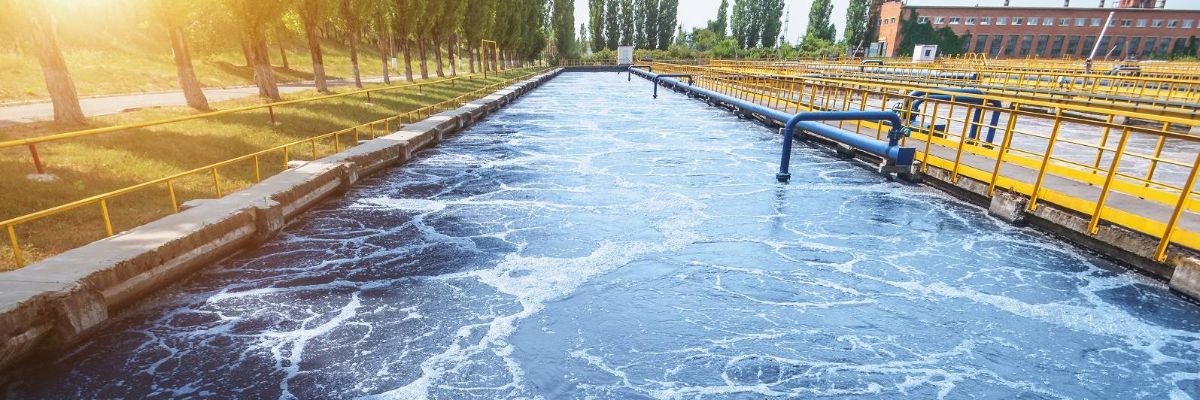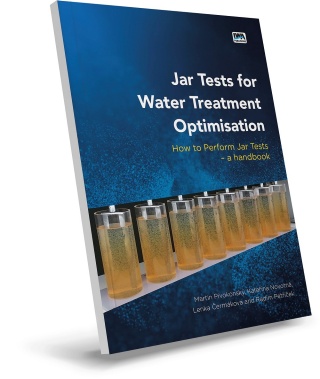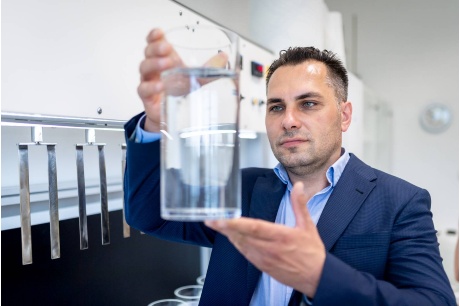
Do we purify water effectively? Quality can easily be improved, research shows
23. 05. 2022
For raw water to turn into drinking water, it must go through a process of complex purification which first removes any physical impurities. This is achieved thanks to a process called coagulation, which is not, however, equally effective in all cases. In order for water treatment plants to adjust the purification process as needed, they have to test the water. Lacking a comprehensive manual until now, water treatment plants can newly consult the just published handbook put together by experts from the Institute of Hydrodynamics of the CAS. The handbook is also available for free in electronic form.
Our surface waters contain a significant amount of foreign substances. Modern analytical methods can detect everything from pesticides, nanomaterials, and microplastics to residuals of pharmaceuticals, antidepressants, or various hormones. All these substances are present in water in very small concentrations, but researchers are not certain what biological effects a number of these residuals can have. It’s therefore a good idea to purify raw water as efficiently as possible.
A team of experts from the Institute of Hydrodynamics of the CAS, led by Martin Pivokonský, has published a handbook entitled Jar Tests for Water Treatment Optimisation: How to Perform Jar Tests. It should standardise and streamline water treatment procedures and raise awareness of one of the basic tests of treatment efficiency, the so-called jar test.
Different waters, different treatment requirements
Coagulation is a process used during water treatment. The principle is simple: a substance is added to the water that contains impurities, which then overcomes the repulsive forces of the impurities contained in the water. The technical term for this substance is coagulant. It allows the particles to merge into larger units, known as flocs, which are then easily removed or filtered out of the water.

The handbook was published by the International Water Association which brings together water treatment experts from all over the world.
However, the coagulation process is not always just as efficient or reliable. Its effectiveness is largely influenced by the nature of the impurities themselves. The type of coagulant used is also a variable. The temperature of the water, its pH value, and even how and with what intensity the water is stirred during the purification process – these all have an influence. To determine how effective the water treatment will be, the operators need to get the parameters right. That’s what the tests are for.
Testing, testing, 1, 2, 3
One such basic test, the most widely used worldwide, is the optimisation jar test. Its procedure has been known since the 1920s and is still used today in various modifications. “It is an absolutely crucial and irreplaceable test for optimising basic technical parameters in the water treatment process,” explains Martin Pivokonský, director of the Institute of Hydrodynamics of the CAS and the main author of the handbook.
The model jar test is a series of laboratory tests that simulate the entire treatment process on a small sample of water. With its help, it is possible to determine the most effective type of coagulant and a number of other variables that affect the purification process.

Martin Pivokonský, Director of the Institute of Hydrodynamics of the CAS and lead author of the publication. (CC)
Although the jar test is an essential tool for water treatment, its use is not entirely common. “Performing jar tests is not common practice in water treatment plants,” the researcher adds. Many water treatment plants do not test the effectiveness of the purification process, relying instead on past experience or managing the treatment based on the water treatment engineers’ feel for it.
But over the past decade, water quality has generally been declining, and new types of pollution are constantly emerging. Water treatment technology must respond to these changes. Inefficient treatment not only leads to a reduction in the quality of drinking water, but also increases the operating costs of treatment. Water containing contaminants clogs filters, which then need to be changed more frequently. “If we take advantage of the latest findings and adjust the parameters for water treatment correctly, the whole process can be very efficient and relatively inexpensive,” Pivokonský notes. “However, it is always necessary to react to specific circumstances when implementing a procedure, because every water is different.”
For cleaner water in our lives
The new handbook put together by experts from the Institute of Hydrodynamics of the CAS makes it possible for all water treatment engineers, regardless of their experience, to perform jar tests. “We’ve spent years standardising the methodology to make the tests easy to use while also providing relevant results,” Pivokonský sums up, adding that the jar test itself does not require any special equipment. “Moreover, the preparation takes no more than two hours,” he adds.
In addition to the printed version, you can also download for free the electronic version of Jar Tests for Water Treatment Optimisation: How to Perform Jar Tests here.
Prepared by: Jan Hanáček, Division of External Relations, CAO of the CAS
Translated by: Tereza Novická, Division of External Relations, CAO of the CAS
Photo: Shutterstock; Institute of Hydrodynamics of the CAS; Jana Plavec, Division of External Relations, CAO of the CAS
 The text and photos marked (CC) are released for use under the Creative Commons license.
The text and photos marked (CC) are released for use under the Creative Commons license.
Read also
- A trapped state: The pandemic impact on public attitudes, trust, and behavior
- Aerial archaeology: Tracing the footsteps of our ancestors from the sky
- Archaeologists uncover ancient finds along Prague Ring Road
- Our microbiome largely depends on what we eat, says microbiologist Michal Kraus
- The ABCs of writing: Why did its invention mark a turning point for humankind?
- We learn, remember, forget… What can memory actually do? And can we outsmart it?
- New Center for Electron Microscopy in Brno opens its doors to global science
- The hidden lives of waste: What can we learn from waste workers and pickers?
- A unique lab is hidden right beneath Prague’s Vítkov Hill
- Renewables are a strategic investment in European security, scientists say
The Czech Academy of Sciences (the CAS)
The mission of the CAS
The primary mission of the CAS is to conduct research in a broad spectrum of natural, technical and social sciences as well as humanities. This research aims to advance progress of scientific knowledge at the international level, considering, however, the specific needs of the Czech society and the national culture.
President of the CAS
Prof. Eva Zažímalová has started her second term of office in May 2021. She is a respected scientist, and a Professor of Plant Anatomy and Physiology.
She is also a part of GCSA of the EU.